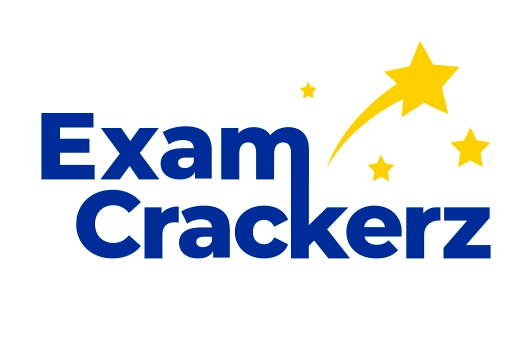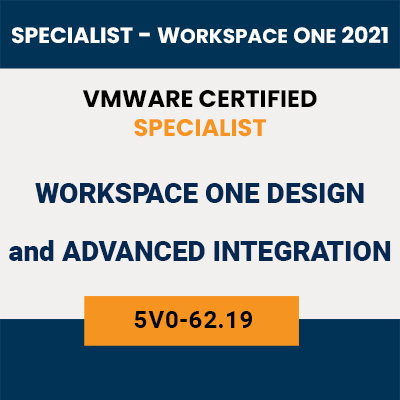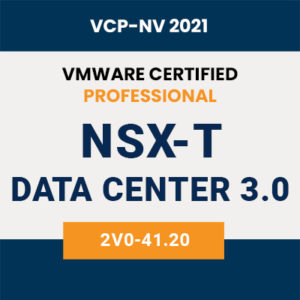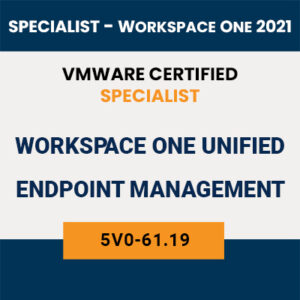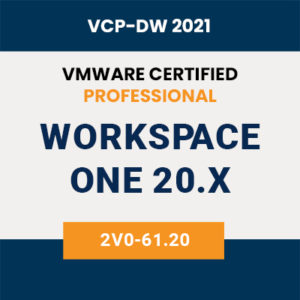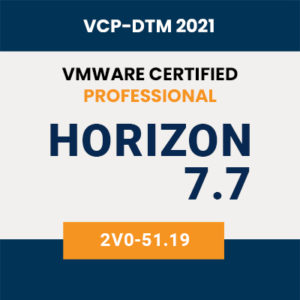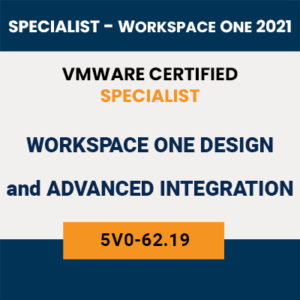Description
Exam Details
The VMware Workspace ONE Design and Advanced Integration Specialist exam (5VO-62.19) which leads to VMware Specialist – Workspace ONE Design and Advanced Integration 2021 is a 60-item exam, with a passing score of 300 using a scaled method. Exam time is 100 minutes.
Exam Delivery
This is a proctored exam delivered through Pearson VUE. For more information, visit the Pearson VUE website.
Badge Information
For details and a complete list of requirements and recommendations for attainment, please reference the VMware Education Services — Certification website.
Minimally Qualified Candidate
The minimally qualified candidate should be familiar with designing, deploying, and supporting a Workspace ONE app catalog. They should understand how to integrate and configure an identity provider. They should be familiar with single sign-on and multi-factor authentication. Candidates must hold a VMware Certified Professional — Digital Workspace certification and have completed all recommended training courses for this credential. The successful candidate will likely hold additional industry-recognized IT certifications or accreditations. The MQC should have all the knowledge contained in the exam sections listed below.
Exam Sections
Section 1- Introduction
Section 2- Authentication Method Deep-dive
Section 3- Mobile SSO
Objective 3.1 Outline the workflow of iOS and Android Mobile SSO
Objective 3.2 Configure Mobile SSO for iOS native applications
Objective 3.3 Configure Mobile SSO for Android native applications
Section 4- Single Sign-On for Application
Objective 4.1 Configure web application SSO with SAML protocol
Objective 4.2 Configure web application SSO with OAuth 2.0 protocol
Section 5- Azure AD and Office 365 Integration
Objective 5.1 Given a use case Azure AD with Workspace ONE, identify the implementation flow that should be used.
Objective 5.2 Outline the steps of configuring Office 365 SSO with VMware Identity Manager
Objective 5.3 Outline the steps of integrating Azure AD as a 3rd party identity provider for Workspace ONE
Section 6- Integration with Okta
Objective 6.1 Outline the workflow of Okta integration
Objective 6.2 Outline the steps of integrating Okta as the identity provider
Objective 6.3 Outline the steps of integrating Okta as the service provider
Objective 6.4 Objective: Add Okta applications to Workspace ONE.
Section 7- Additional 3rd Party IDP Integration
Objective 7.1 Outline the steps of integrating with AD FS
Objective 7.2 Outline the steps of integrating with PING
Objective 7.3 Configure a 3rd party identity provider in the VMware Identity Manager console
Objective 7.4 Configure authentication methods for the integrated 3rd party identity providers
Objective 7.5 Modify access policies to accommodate the integrated 3rd party identity providers
Section 8- Advanced Configurations
Objective 8.1 Configure the steps of the workflow of UAG identity bridging
Objective 8.2 Outline the steps of incorporating IP restrictions into Conditional Access
Objective 8.3 Outline the high-level steps of configuring KCD with SEG
Section 9- Workspace ONE AirLift
Objective 9.1 Outline the steps of Workspace ONE AirLift deployment
Objective 9.2 Configure environment settings in the Workspace ONE AirLift management interface
Objective 9.3 Migrate collections and applications from SCCM to Workspace ONE UEM
Objective 9.4 Enroll Windows 10 endpoints into co-management
Section 10- 10 Integrating with Horizon
Objective 10.1 Analyze/Apply (Scenario) Configure VIDM connector for Horizon
Section 11- Workspace ONE Plan and Design Course Introduction
Section 12- Workspace ONE Plan and Design Fundamentals
Section 13- Identifying Use Cases
Objective 13.1 Identify the key Workspace ONE UEM use cases
Objective 13.2 Identify the key VMware Identity Manager use cases
Objective 13.3 Identify the key Horizon use cases
Objective 13.4 Collect use cases and user experience requirement for VMware solution design
Objective 13.5 Identify design considerations when joint VMware solutions are integrated, (for example: Workspace ONE, UEM, and VMware Horizons.)
Section 14- Creating Logical and Physical Designs
Objective 14.1 Design the high-level logical solution architecture
Objective 14.2 Analyze/Apply (Scenario) Validate the logical solution architecture
Objective 14.3 Analyze/Apply (Scenario) Create the physical solution architecture
Objective 14.4 Analyze/Apply (Scenario) Validate the physical solution architecture
Objective l4.5 Analyze/Apply(Scenario)
Design appropriate Workspace ONE solution roll-out plan for end users
Section 15- Workspace ONE Solution Delivery
